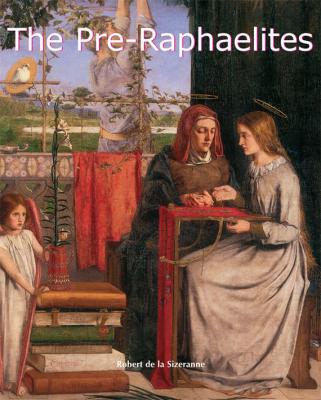The Pre-Raphaelites. Robert de la Sizeranne
Читать онлайн.| Название | The Pre-Raphaelites |
|---|---|
| Автор произведения | Robert de la Sizeranne |
| Жанр | Иностранные языки |
| Серия | Art of Century |
| Издательство | Иностранные языки |
| Год выпуска | 2016 |
| isbn | 978-1-78310-327-0 |
Upon their return, they explained that the young man had set sail quickly for a foreign country because of some pressing need. Isabel asked them if he would return soon, but got no reply, and they deceived her every day with new stories. Finally, she had a dream that revealed the truth to her. In it appeared Lorenzo, who said to her: “Isabel, my sweet! Red whortleberries droop above my head, and a large flint-stone weighs upon my feet; Around me beeches and high chestnuts shed their leaves and prickly nuts.” When morning came, she ran to the forest with her old nurse. Her eyes fell upon the knife that had been used in the murder. The two women dug and dug, and found the corpse. Then, the distraught lover, wanting to keep something of the dead man at any price, cut off his head and carried it back home with her. There she embalmed it and hid it in a flowerpot, under a basil plant that was kept green by her endless tears. From then on, she neglected everything and cared only for her beloved basil. Day and night, she cried over the plant, which grew and flowered wondrously. This astonished her brothers, who looked to see what was under the basil, and though “the thing was vile with green and livid spot,” they recognised Lorenzo’s head. Appalled, they fled their homeland, carrying away what remained of their victim. But as soon as she no longer had her beloved plant, Isabel fell ill and wasted away. And finally she died, mournfully asking everyone else who approached her and pilgrims returning from faraway lands, what had become of her basil-pot.
Edward Burne-Jones, The Challenge in the Desert, 1894–1898.
Oil on canvas, 129.5 × 96.5 cm.
Collection Lord Lloyd-Webber.
Eleanor Fortescue-Brickdale, The Wise Virgins, 1901.
Two watercolours on one canvas, upper panel: 37 × 30 cm; lower panel: 11 × 30 cm.
Christopher Wood Gallery, London.
This was the drama from which each of the Pre-Raphaelites was expected to depict a scene, rigorously applying the theories of their new school: no imitation of the masters, no generalisation, each figure reproduced from a model and from one single model, outlines as original and individual as possible, painting on an unprepared white canvas, and fastidious attention to detail. In a word, earnestness. But, while Rossetti continued talking away and Hunt prepared by meticulously studying every detail of his subject, Millais had already constructed, sketched out, and finished his painting. For the Exhibition of 1849, in which all three of them participated together, only Millais produced a work inspired by Keats.[12]
Конец ознакомительного фрагмента.
Текст предоставлен ООО «ЛитРес».
Прочитайте эту книгу целиком, купив полную легальную версию на ЛитРес.
Безопасно оплатить книгу можно банковской картой Visa, MasterCard, Maestro, со счета мобильного телефона, с платежного терминала, в салоне МТС или Связной, через PayPal, WebMoney, Яндекс.Деньги, QIWI Кошелек, бонусными картами или другим удобным Вам способом.
